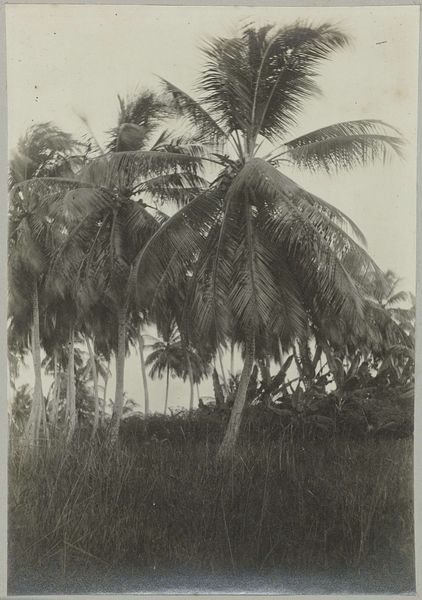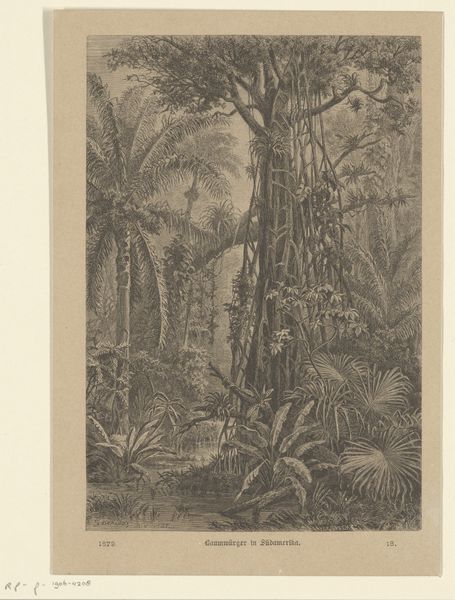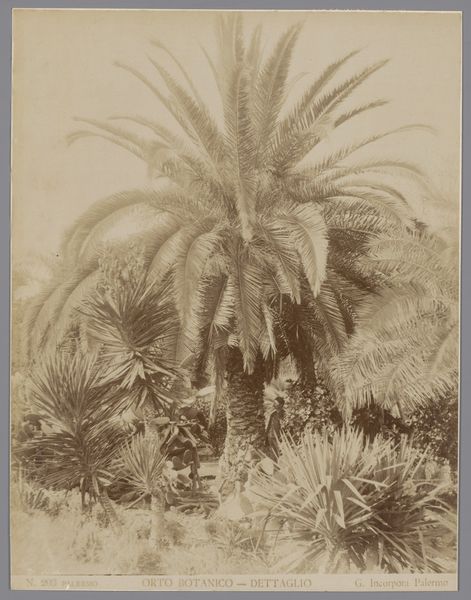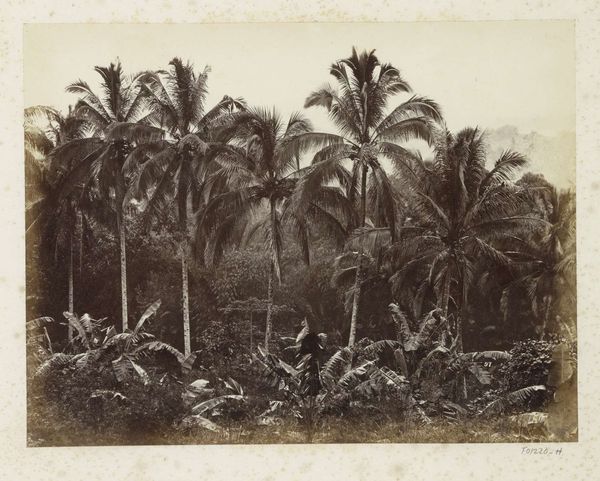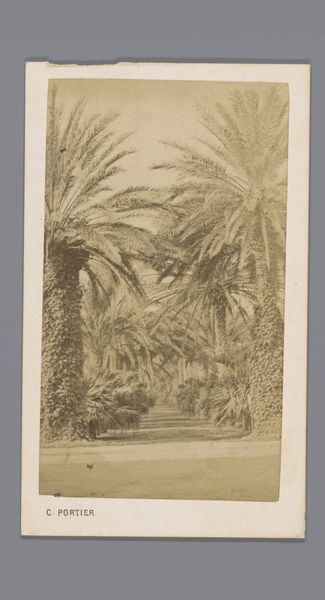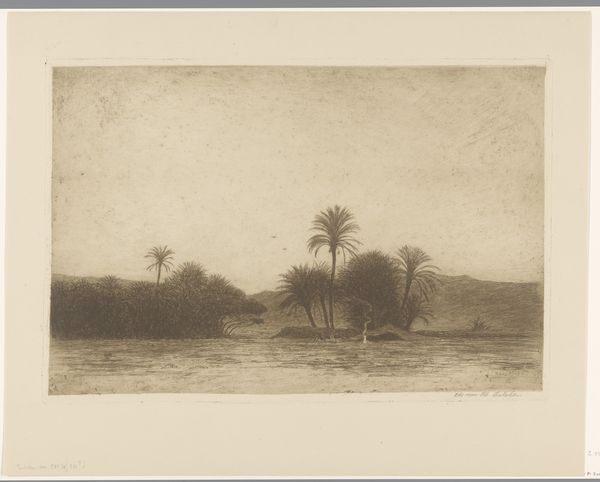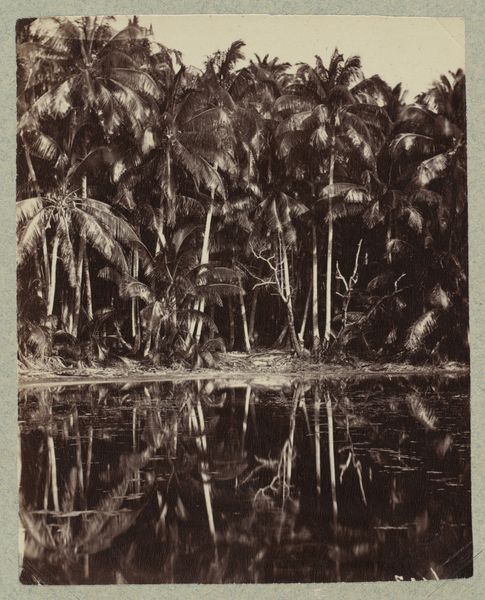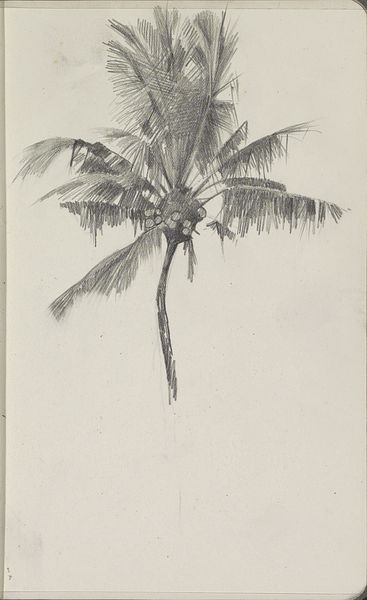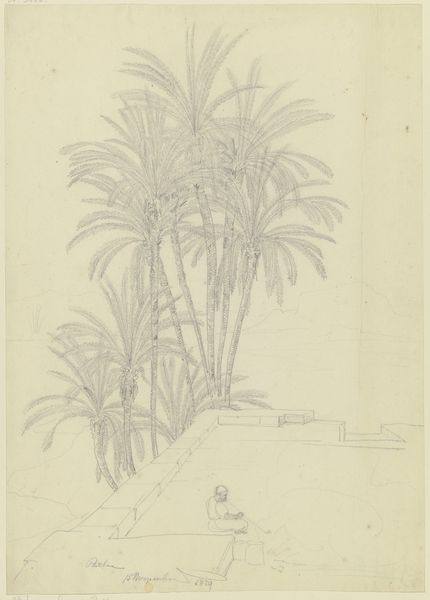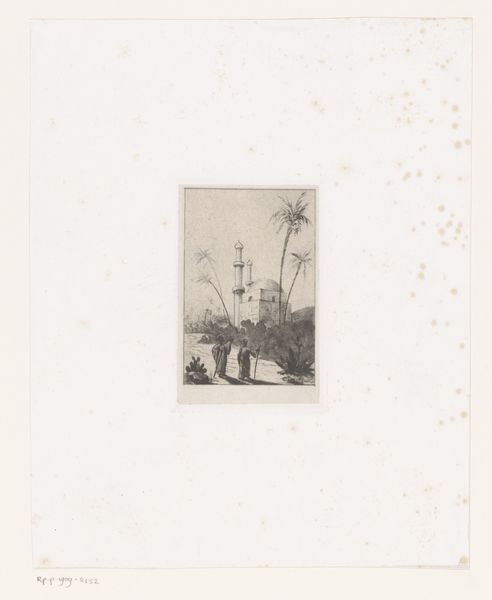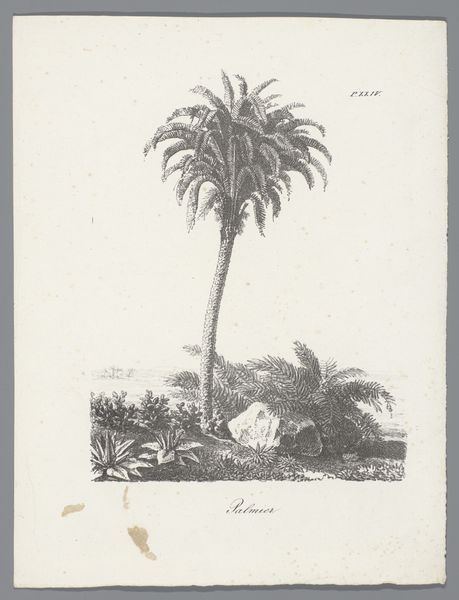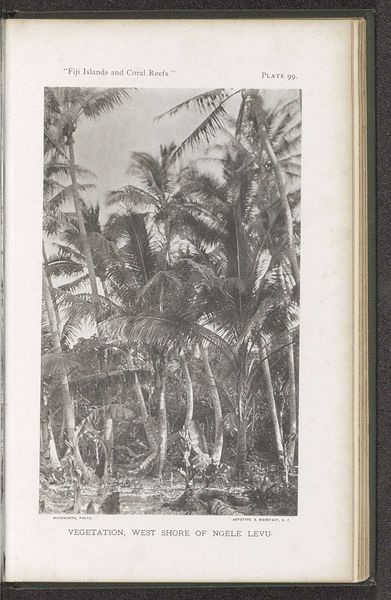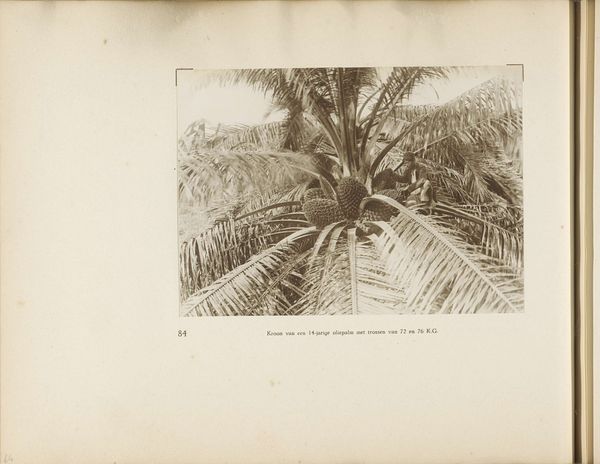
print, photography
# print
#
landscape
#
photography
#
orientalism
Dimensions: height 110 mm, width 78 mm
Copyright: Rijks Museum: Open Domain
Curator: Before us, we have "Cocospalm," a photographic print by Eugen Klein, dating roughly from 1900 to 1905. It's currently held in the Rijksmuseum collection. Editor: It's washed in sepia, almost dreamlike. The composition has an intriguing contrast between the strong vertical thrust of the central palm and the hazy depth of the background. Curator: That sepia tone and slightly blurred quality were very much a product of the photographic processes available at the turn of the century. Think about the burgeoning interest in representing "exotic" locales and peoples at this time. Photography played a critical role. Editor: Absolutely. And Klein masterfully uses the light here. Notice how it softens the sharp lines, creating this hazy, almost ethereal effect. The fronds themselves, though static, seem ready to sway with the breath of the wind. Curator: What’s interesting is that photographers like Klein weren’t just documenting reality. They were also constructing a particular vision of these "oriental" spaces for Western consumption. There's a romanticism, a distancing, even, that can be unpacked there. This idyllic scene, though seemingly untouched, is certainly seen through a colonial lens. Editor: Yes, even within the formalism, one sees that romantic sensibility. The way the artist directs your eye through the ascending form of the trunk and then outwards along the palm's delicate branches... It really is all very calculated. But for what, one asks. Curator: Precisely. It’s a carefully staged presentation of a tropical idyll. Klein may be presenting these locals climbing these "cocospalms" as an almost natural extension of this romantic tropical paradise but are we missing a chance to engage in questions about labor and resources? Editor: I see your point. Although, simply considered, this is still a very fine print, an interesting study in photographic tonal range, depth, and compositional rhythm, regardless of its problematic roots. Curator: Perhaps a fruitful reminder, then, that even the most aesthetically pleasing images carry embedded meanings and historical baggage that demands our critical engagement. Editor: Yes. Beauty often has a complex story. It's our responsibility as viewers to look beyond it, and around it.
Comments
No comments
Be the first to comment and join the conversation on the ultimate creative platform.
